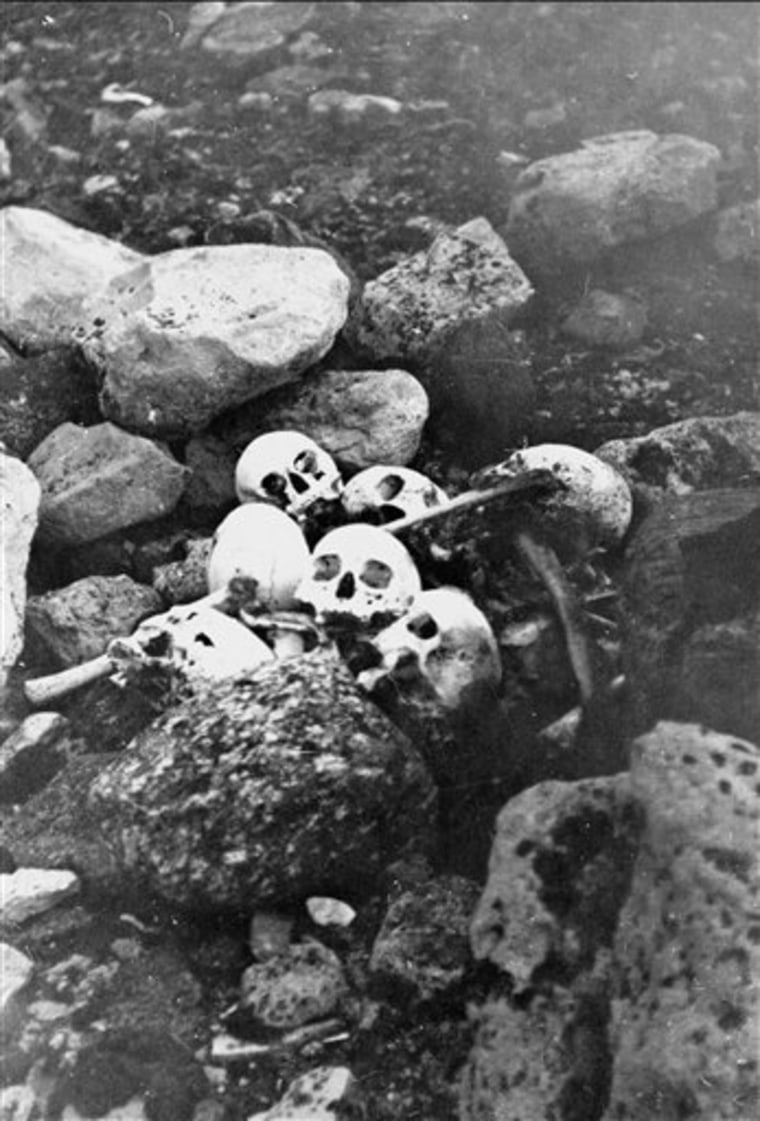For more than 160 years, the fate of British explorer Sir John Franklin and his men has remained locked in the frozen Arctic, but warming temperatures are threatening to change that.
Canadian officials announced Friday they will lead a new search for Franklin's two ships, their efforts driven by a desire to assert control over the Northwest Passage and fears that melting ice will allow others to find and plunder the remains.
"Obviously more of this water will be traversable in more parts of the year so we want to find it before Hollywood," Environment Minister John Baird told The Associated Press after announcing the Parks Canada-led search for the HMS Erebus and HMS Terror.
Franklin and 128 hand-picked officers and men vanished mysteriously between 1845-48 on an expedition to find the fabled Northwest Passage. Franklin's disappearance prompted one of history's largest rescue searches, from 1848 to 1859, which resulted in the discovery of the passage.
The route runs from the Atlantic to the Pacific through the Arctic archipelago. It gained fame among European explorers who longed to find the shorter route to Asia, but found it rendered inhospitable by ice and weather.
Robert Grenier, a senior underwater archaeologist with Parks Canada, will lead the reconnaissance mission, aboard the Canadian Coast Guard icebreaker Sir Wilfrid Laurier.
"It's very exciting. It's like an Indiana Jones adventure. It's searching for a lost under water tomb," Baird told The Associated Press.
The mission comes as Canada moves to assert sovereignty over the Northwest Passage, where melting ice floes have unlocked the very shipping route Franklin's men were after. The passage is a potentially oil-rich region the United States claims is international territory.
Grenier, noting that Hollywood producers and others have offered local aboriginal Inuits money to help search for the ships, said the melting sea ice makes it easier for his crew to navigate the polar waters — but it also opens the once-inaccessible Northwest Passage to grave robbers.
"Our objective is to find and protect the wreck, because they are in danger of being found by people who don't have the know-how and the same intention and preoccupation that we have," Grenier said.
Baird called Canada's Arctic a big priority for Prime Minister Stephen Harper, who is expected to travel there this month.
"There's certainly a lot of riches up there," Baird said. "There's everything from environmental treasures to resource treasures."
The six-week Franklin mission begins Monday. If the expedition fails to find the lost ships, two more six-week expeditions are scheduled for the next two summers.
Franklin's vessels are among the most sought-after prizes in marine archaeology.
Tantalizing traces have been found over the years, including the bodies of three crewmen in the 1980s. The bodies of two English seamen, John Hartnell, 25, and royal Marine William Braine, 33, were exhumed in 1986 and an expedition uncovered the perfectly preserved remains of a petty officer John Torrington, 20, in an ice-filled coffin in 1984.
The ships have never been seen.
Experts believe the ships came to grief in 1848 after they became locked in the ice near King William Island and the crews abandoned them in a hopeless bid to reach safety.
Relief efforts financed by Lady Franklin, the Royal Navy and even the Hudson's Bay Co., vainly scoured the region for more than a decade.
Grenier and his team will use sonar to cover a 150-to 300-square mile search area, also scouring the surrounding islands for remnants of the ships or their crew
Inuit researcher Louie Kamoukak will aid the team in their search with accounts passed down from 19th-century ancestors who witnessed the lost Franklin crew's forlorn end.
"For the first time in over 160 years, I feel that the witnesses of (the) Franklin tragedy events have a chance to really contribute to an important search party," he said.
Author Dorothy Harley Eber gathered Inuit oral accounts in Cambridge Bay, Nunavut, while researching an upcoming book on the Northwest Passage.
Inuit lore tells of "white men who were starving" as late as the winter of 1850 on the Royal Geographical Society Island, she said, meaning some of Franklin's crew may have survived longer than previously thought.
Inuit elders believe greasy patches on the islands' shores mark the spots where the stranded crew used seal oil blubber for cooking and warmth, she said.
